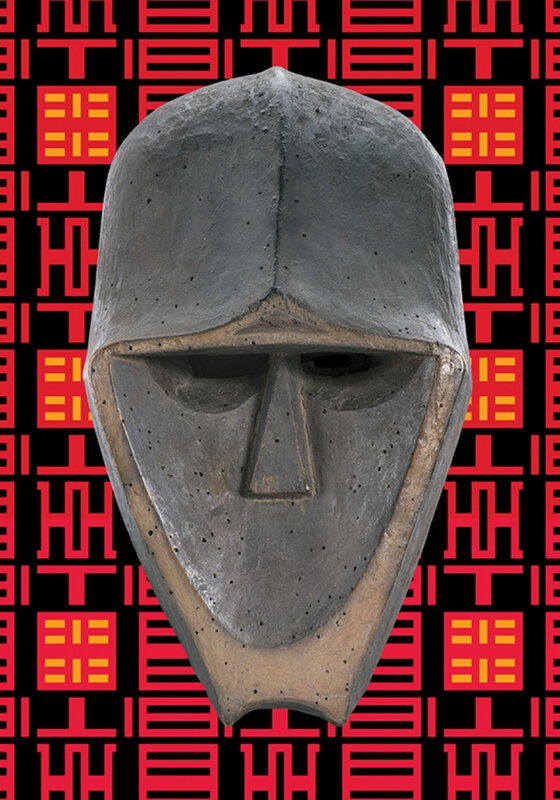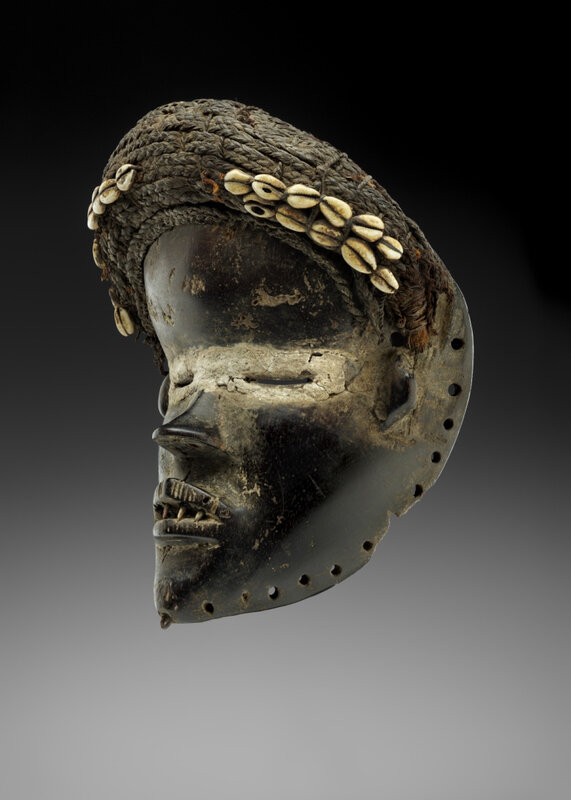BOZAR exhibits 150 works of art from Congolese art collector Sindika Dokolo's impressive collection
BRUSSELS.- South-African artist/curator Kendell Geers and Congolese art collector Sindika Dokolo selected together 150 works of art from Dokolo’s impressive collection. Their aim is to lead the visitor towards a change in the perspective on ancient and contemporary African art, by focusing on the spirituality that binds them.
IncarNations is at once a mix and exchange between classical and contemporary art from Africa and its diasporas. The masks, images and historic objects act as milestones, anchoring contemporary works in the ancient context of live creation. For the first time, the classical and contemporary works of this art collection are presented together to the general public.
The scenography, a vibrant compilation of image, sound and colour, evokes associations with the dynamic bustle of an African metropolis and underpins the vitality of the works on display.
The exhibition includes works by William Kentridge, Tracey Rose, Wangechi Mutu, Otobong Nkanga, Yinka Shonibare CBE, Pascale Marthine Tayou, Ana Mendieta, Kehinde Wiley, Andres Serrano, Aida Muluneh, Mwangi Hutter, Hank Willis Thomas, Adrian Piper, Lubaina Himid, Roger Ballen, Zanele Muholi, Phyllis Galembo…
IncarNations proposes an alternate approach to the current tendency to appreciate African art on the basis of its aesthetic quality, origin, and ethnographic context. An Afrocentric approach - ‘African art as philosophy’ - takes as reference the thought of Léopold Sedar Senghor and its analysis by philosopher Souleymane Bachir Diagne*. In order to understand art, it is important to apprehend the work’s context, including its spiritual context. An African mask, for example, created to bring about a symbolic transformation, allowed its wearer to incarnate a deity. This same spiritual strength is embodied in both classical and contemporary works.
Kendell Geers’ work Twilight of the Idols, a small magico-religious statuette wrapped in hazard warning tape, welcomes visitors. This piece, which brings together classical and contemporary art, forms the key to the exhibition, with its complex spiritual powers and stratification. The route flows organically through themes such as animism, Negritude, feminism, identity, masquerade, performativity, fetish, liberation movements, masking traditions and spirit. The classical works are given a central place as spiritual keepers of the exhibition around which the contemporary works are orchestrated. Bruno De Veth’s scenography, a contrasted compilation of image, sound and colour, evokes associations with the dynamic bustle of an African metropolis and underpins the vitality of the works on display.
Kendell Geers, Twilight of the Idols (Fetish), Emergency chevron tape, lost object and nails, 2002, 64 X 35 X 30 cm, © Courtesy of the artist.
In IncarNations, Sindika Dokolo and Kendell Geers question the complexity of African identity from a resolutely Afrocentric perspective. After all, Africa is an old continent of 54 countries, thousands of living languages and dialects, traditions, and as much contrasts and multiplicities. The African spirit followed its diasporas via the slave, colonial, trade and exile routes and spread world-wide. It influenced Brazilian, Cuban, European and American traditions. And thus paradoxically, African arts defy all geographical definitions because of the importance of diasporas from this continent. Therefore, to build a collection which claims an African identity raises the core question of ‘what is African art?’’
The scenography of the exhibition IncarNations seeks to change our perception of Victor Horta’s architecture. It is inspired by a reading of social, political and symbolic spaces achieved by overlaying an old plan of Kinshasa onto the existing exhibition circuit. This intervention, articulated through an integration of design elements, creates a new spatial experience that can be read on different levels: of assimilation, of differentiation and of confrontation. The exhibition design embodies the contemporary urban experience in which «public spaces” are activated to stimulate exchange and encounter.
Inspired by the minkisi sculptures (with mirrors on their stomachs and/or eyes), the exhibition focuses on mirrors to open the discussion and the perception of the spaces. The mirrors in the minkisi sculptures can be interpreted as material witnesses to the millennia-old trade of merchandise and ideas between Europe and Africa. The mirrors in the exhibition also urge us to look beyond our own reflection and to see the world from the other side of the mask. In addition they reflect the very rooms where in 1930 the major «Art Nègre” exhibition was organized.
Inspired by the minkisi sculptures (with mirrors on their stomachs and/or eyes), the exhibition focuses on mirrors to open the discussion and the perception of the spaces. The mirrors in the minkisi sculptures can be interpreted as material witnesses to the millennia-old trade of merchandise and ideas between Europe and Africa. The mirrors in the exhibition also urge us to look beyond our own reflection and to see the world from the other side of the mask. In addition they reflect the very rooms where in 1930 the major «Art Nègre” exhibition was organized.
* African Art as Philosophy: Senghor, Bergson and the Idea of Negritude by Souleymane Bachir Diagne, Seagull Books, 2011, In this book, Diagne explains Senghor’s primordial intuition that African art is philosophy, and how the vitalism at the core of African religions and beliefs found expression in the arts.
"YINKA SHONIBARE MBE" COLLECTION." Copyright Yinka Shonibare CBE Courtesy Stephen Friedman Gallery, London; James Cohan Gallery, New York.

/https%3A%2F%2Fprofilepics.canalblog.com%2Fprofilepics%2F1%2F0%2F100183.jpg)
/https%3A%2F%2Fstorage.canalblog.com%2F03%2F02%2F119589%2F96711876_o.jpg)
/https%3A%2F%2Fstorage.canalblog.com%2F11%2F31%2F119589%2F94773502_o.jpg)
/https%3A%2F%2Fstorage.canalblog.com%2F20%2F83%2F119589%2F94772815_o.jpg)
/https%3A%2F%2Fstorage.canalblog.com%2F26%2F72%2F119589%2F75604929_o.jpg)
/https%3A%2F%2Fstorage.canalblog.com%2F59%2F60%2F119589%2F26458628_o.jpg)








/http%3A%2F%2Fstorage.canalblog.com%2F66%2F59%2F119589%2F128562333_o.jpg)
/http%3A%2F%2Fstorage.canalblog.com%2F80%2F59%2F119589%2F127170709_o.jpg)
/http%3A%2F%2Fstorage.canalblog.com%2F42%2F59%2F119589%2F126915328_o.jpg)
/http%3A%2F%2Fstorage.canalblog.com%2F41%2F24%2F119589%2F122214193_o.jpg)